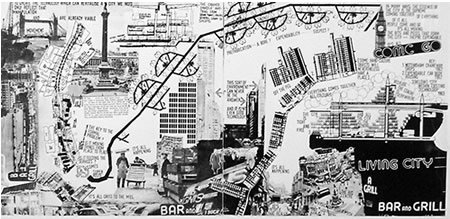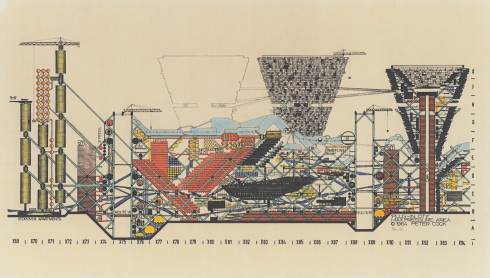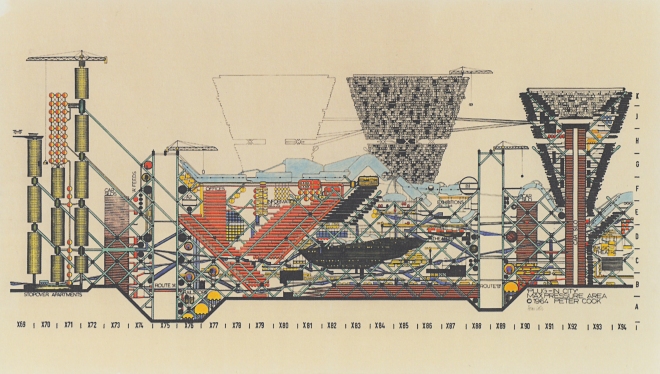WHAT IS ARCHIGRAM? Archigram was an avant-garde architectural group which was created in the 1960’s. This group was located at the Architectural Association in London. It was neo-futuristic and allowed for drawing inspiration to come from technology in order to create new reality which came across in hypothetical projects.
There was only a short period, of about two years, when all the designers within Archigram were all together, at the same place at the same time. This was when they designed and produced their first major exhibition, ‘Living City’.


Archigram was disturbed to help prevent modernism becoming unimaginative. Unlike ephemeralisation from safe orthodoxy by its adherents. Unlike ephemeralisation from Buckminster Fuller who thought more had to be done with smaller amounts of material, Archigram relies on a future with endless resources.
SIR PETER COOK
Sir Peter Cook is one of the funding members of Archigram. He is a British architect as well as a professor and writer. Sir Peter Cook has been on of the most vital figures within the architectural world for many years, his most significant work from his time with Archigram would be, ‘The Plug-In City’. This still creates debates on technology and society as it challenges the standards for architecture today.

Plug-In City
The Plug-In City was one of many projects, along with ‘The Walking City’ and ‘The Instant City’, these all suggested a nomadic way of life and also a release from modernists. Although these were never built, their projects allowed for debates within architecture, technology and society. Plug-In was proposed in the 1964 and offered a new amazing approach to urban cities, this revered the traditional perception of components in the city.
The concept suggested a fantasy city which contained modular buildings that ‘plug-in’ to a central structure mega machine. It technically is not a city but it is constantly growing to incorporate more buildings, transportation and other essential services which would be needed, these would all of been movable with giant cranes.

The constant concerns of modernism lay at the centre of the ‘Plug-In City’. This concept had no limits to transportation, accommodation and also the change of the urban society. Cook became very recognised after this design but he has also been recognised for many other pieces of work. His most recent works include his Art Museum in Graz, this allowed for his work to be seen by a larger audience, allowing for more recognition.

WHAT IS BRUTALIST ARCHITECTURE? Brutalist architecture is a movement which developed from the 1950s to the mid-1970s, sloping from modernist architecture from the 20th century. Brutalist architecture originates from the french word ‘raw’ which was used by Le Corbusier as he decided to use raw concrete. Reyner Banham who is a British architectural critic modified the name to ‘Brutalism’ and this helped identify the new developing styles.

Brutalism started to become popular within the governmental and institutional clients, with many examples being in Britain, France, Germany, Japan, the United States, along with more. These examples can be noticed as they have a large character, a lot of the time they have exposed raw concrete which was used very largely in Brutalism.
Brutalism architecture very often had a plan which allowed for the main functions and people-flow throughout the building. It became popular for buildings such as universities and also block of flats. A example of Brutalism today is Park Hill Flats, Sheffield.


Very interesting!
LikeLike